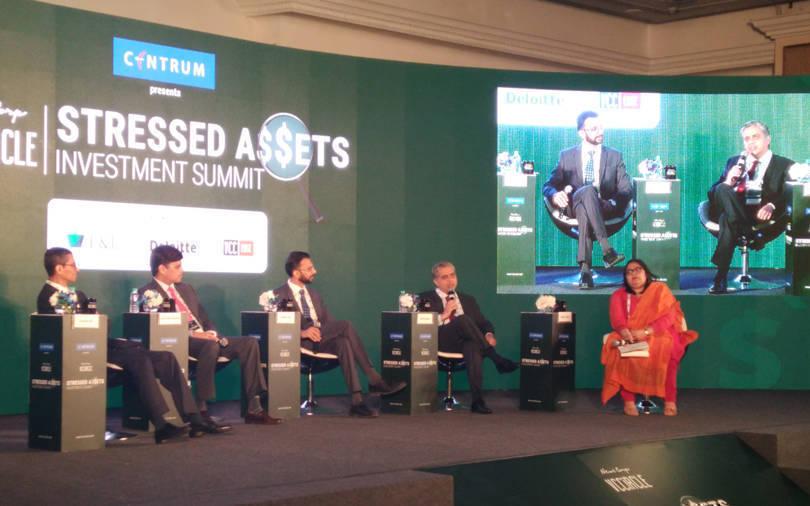The Insolvency and Bankruptcy Code, 2016 has effectively tackled the menace of stressed assets in the country; however, unique operational challenges continue to block the resolution process of the non-performing loans, said panellists at the second edition of the News Corp VCCircle Stressed Assets Investment Summit 2019.
The panel, which comprised of industry stakeholders representing both buyers and sellers, opened to a packed audience discussing the success and learnings of the bankruptcy law which was passed in early 2016.
Apurva Jayant, partner at L&L Partners, who was moderating the session, said the new legislation brought about rapid changes to the industry only in the last six months and not in the first 1.5 years since its implementation.
The success rate and the perceived challenges of the process also vary depending on whether it is bankers, financial investors, strategic bidders or advisers.
A success for large firms
Manish Jain, the managing director and India head of investment management firm SSG Advisors, which has been present for over a decade in the market, said that the pace of the resolution process has improved and it will undergo multiple changes in the future.
Larger companies, especially in the commodities sector, have seen success, but it remains to be seen whether that success can be replicated for smaller firms, he explained.
“As an investor, we have to allocate a lot of resources even before the bidding process, which is three months of intense efforts. When we invest time but are not sure of the outcome, there is uncertainty, and that can be discouraging. We require better visibility of the deal outcome. If you are the preferred bidder, we require a long stop date because the capital has a limited shelf life,” he added.
Challenges in the resolution process
Kaustubh Kulkarni, group head, M&A and strategic financing, JSW Steel, said that the IBC law brought a change in credit discipline. “The Indian steel industry has 120 million tonnes in capacity. About 20% of the total capacity went through IBC and has been resolved in the last two years. Globally, we have seen instances where a single case is resolved in three years. On the macro side, the act is life-changing in the stressed assets space,” he added.
However, Kulkarni said that there are several challenges in the entire process.
In the bidding process, the first key element is the information available about the asset. This is difficult to obtain when the situation is hostile and the promoter may not collaborate, he explained.
The second hurdle is dealing with issues such as stamp duty, multiple state-level jurisdictions and complications in tax issues when structuring the deal.
An example of this when 50% of the debt is shaved off and the same asset comes back to the corporate debtor as income based on the tax rule, he added.
Another challenge is financing the acquisitions as the banking sector is going through trouble. “The Reserve Bank of India has proactively discouraged larger lending exposure to a single group. With consolidation in the market, few players are growing in size but they can't tap bank lending because of restrictions at the group level,” he added.
In another related challenge, the capital and bond markets are shallow, even if foreign portfolio investors are subject to fluctuations and restrictions imposed by the RBI and the Securities and Exchange Board of India.
The influence of the markets
“IBC is a seminal legislation. As a bank, when we deploy capital, we need to ensure a path to an exit,” Parth Dey, senior general manager at private sector lender ICICI Bank, said.
One of the key changes the law has brought in is the debt recovery tribunal and the Securitisation and Reconstruction of Financial Assets and Enforcement of Securities Interest Act, 2002 (SARFAESI Act), which are recovery and asset-driven processes. The IBC, on the other hand, is business process driven and is in the right direction, he explained.
While stressed assets may have implementation challenges, the entire resolution process is driven by market forces so it’s necessary to facilitate the various investor bases to look at pre-packaged insolvency.
“The prospective bidders don't get more than a couple of months to evaluate a deal. Are two months enough for a bidder looking to buy an asset worth $5 billion? If the prospective bidder doesn’t get all the information within the limited time frame, then it dissuades them and the company's option is liquidation,” Dey said.
The success of the IBC legislation depends on the quality of information on the assets and the time available for the bidders to conduct due diligence, he added.
Sumit Khanna, partner and head of corporate finance and restructuring, Deloitte India summarised the panel and noted that the IBC has been the most successful legislation in resolving the stressed assets issue.
“We have seen resolutions across size and industry for stressed assets. A pre-pack deal is extremely useful and is in the right direction for the industry,” he added.







